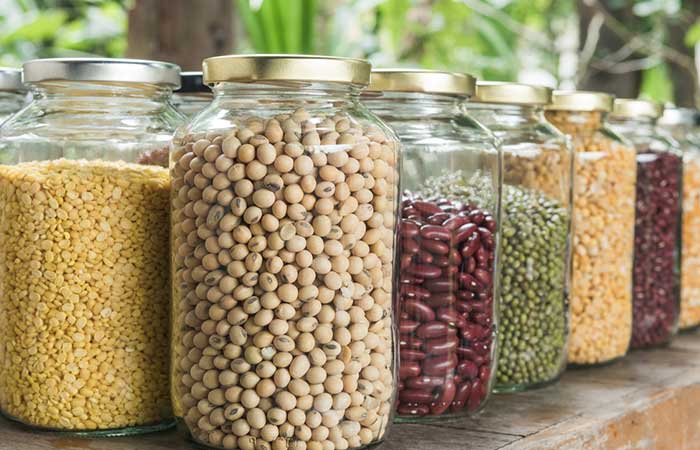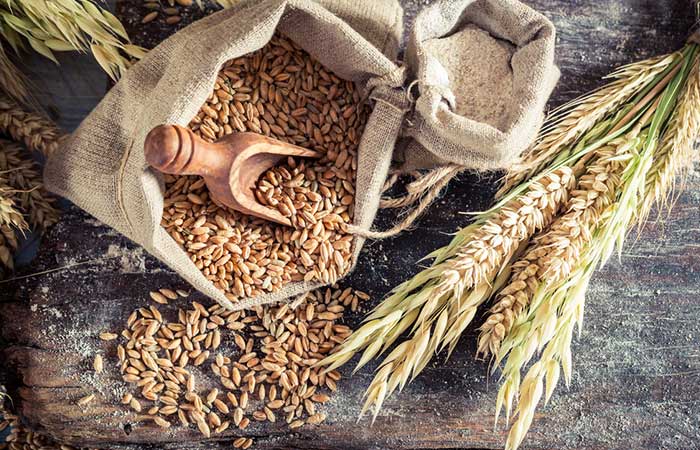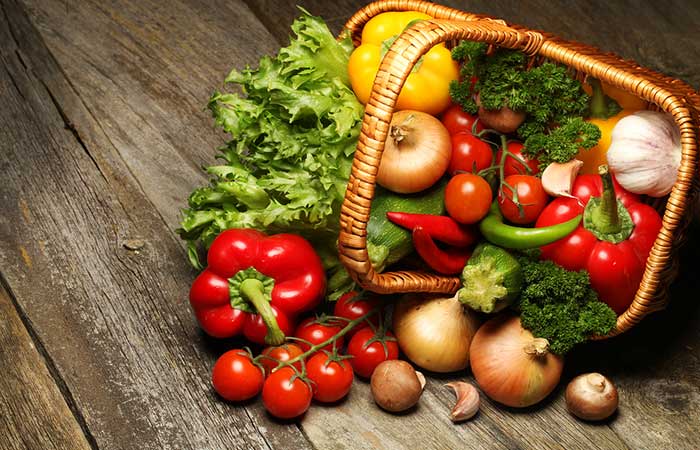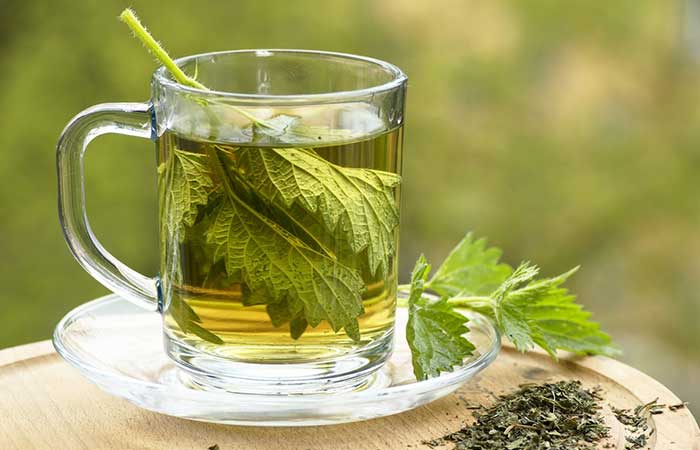Tanya Choudhary
You probably know that hemoglobin is important for your body to function. You might also know that it has something to do with iron, red blood cells, and anemia. But, did you know that boosting your hemoglobin levels entails more than merely increasing your iron intake?
Curious? Read on to know more about hemoglobin and why it is important.
Hemoglobin – A Brief
The production of hemoglobin is vital for your body, and iron, copper, and vitamins B12, B9 (folate), and C play an important role. It is necessary to have a proper diet to maintain an optimum level of hemoglobin. For that to happen, you need to boost your intake of foods that help in the synthesis of hemoglobin.
But, why is hemoglobin important?
Hemoglobin is a protein that is found in the red blood cells. Its most important function is to transport oxygen from the lungs to all the other cells, which helps sustain them.
A low hemoglobin level results in anemia, and it is influenced by many factors. Poor eating habits, poor absorption of the nutrients necessary for the production of hemoglobin, an increase in the required dosage due to pregnancy, blood loss, and even certain medications – they can all result in low levels of hemoglobin (1).
The most common symptoms of a low hemoglobin count are fatigue, shortness of breath, dizziness, headaches, and chest pain. It can lead to serious consequences and affect your cardiovascular system as well (2).
That was all you needed to know about hemoglobin. Let’s now look at the major foods that can help boost your hemoglobin levels. Check them out!
27Â Hemoglobin Rich Foods
I. Meat
It is a well-known fact that meat, particularly red meat, is an excellent source of iron. Here are the different types of meat that can help increase your hemoglobin levels:
1. Liver
The highest concentration of iron, vitamin B12, and folate can be found in the liver. Lamb’s liver boasts of the highest amount of vitamin B12, with 100 g containing 85.7 mcg. It is also a significant source of folate, iron, and vitamin C, having 400 mcg, 10.2 mg, and 13 mg of each respectively.
Other good sources are liver from beef, turkey, and chicken.
2. Ground Beef
Ground beef (without fat) is a good source of iron. Every 85 grams (3 oz) of ground beef provides 2.1 mg of iron.
3. Chicken Breast
Chicken breast is also a good source of iron.
You can obtain around 0.7 milligrams of iron from every 100 grams (3.5 oz) of chicken breast.
II. Seafood
Seafood, such as clam, oyster, and caviar, can provide more than your daily requirement of iron and vitamin B12.
4. Clams
Clams are the richest natural source of iron with 100 grams of clams containing 28 mg of iron, 22.1 mg of vitamin C, and 98.9 mcg of vitamin B12.
III. Legumes
If you are a vegan or a vegetarian, it is necessary you include iron-rich foods in your diet. Legumes, as well as their derivative products, can be good sources. Soybeans, kidney beans, and chickpeas are the recommended legumes.
5. Soybeans
Every 100 grams of soybeans contain 15.7 mg of iron, 375 mcg of folate, 6 mg of vitamin C.
IV. Starches And Grains
Starches such as rice bran, wheat bran, and oat bran are excellent sources of iron. But they do not contain vitamin C or B12, and are not a significant source of folate.
Caution: Those diagnosed with celiac disease should avoid gluten-containing foods (3).
6. Brown Rice
Brown rice is also an excellent choice as it is a good source of iron, and 100 grams of brown rice contains around 0.4 milligrams of iron.
7. Whole Grains
Whole grains, such as barley, quinoa, and oatmeal, are also rich in iron. Every 100 grams of any whole grain contains around 2.5 milligrams of iron.
V. Fruits
Vitamin C is essential for the absorption of iron, which boosts your hemoglobin levels. Fruits such as oranges, lemons, guavas, and litchis are recommended because of their high vitamin C content.
8. Dried Fruits
Dried apricots, raisins, and dates are reliable sources of iron. In fact, 100 grams of dry fruits have 0.8 milligrams of iron. Apart from iron, these dry fruits also contain essential fibers and vitamins.
9. Strawberries
These awesome berries are beneficial for those with low hemoglobin levels in two ways – by providing iron, and by increasing the iron absorption in the body.
10. Prunes
Having prune juice is also an effective way to increase the hemoglobin levels. This fruit is rich in iron, fiber, and vitamin C that assist in the production of RBCs (red blood cells).
11. Apples
Apples are rich in iron (and multiple other nutrients), which makes them suitable for boosting the hemoglobin levels. So, have an apple today!
12. Pomegranate
Pomegranate is rich in iron, calcium, protein, carbohydrates, fiber, and several other vitamins and minerals. Hence, they are often recommended for people who have low hemoglobin levels.
13. Sun-dried Tomatoes
A hundred grams of sun-dried tomatoes contains up to 9.1 milligrams of iron, which makes them important for those suffering from low hemoglobin count.
14. Persimmons
These orange fruits are a reliable source of iron, vitamin C, antioxidants, and several other nutrients.
15. Mulberries
Apart from being a healthy and tasty food alternative for people with diabetes, mulberries are also good for those with low hemoglobin levels. As a matter of fact, 100 grams of this exotic fruit contain about 1.8 milligrams of iron.
16. Currants
Blackcurrants are also a good way to increase the RBC count. They are known to contain around 1 to 3 milligrams of iron per 100 grams, depending on the type.
17. Watermelon
This refreshing and water-based fruit also makes its way to the list of the top foods to increase the hemoglobin levels. This is due to the high levels of iron present in it. It is also rich in vitamin C, which makes the iron absorption process better and faster.
VI. Vegetables
While it is easy to find vegetables that are rich in iron, they fall short as sources of folate and have no vitamin B12.
18. Seaweed
To boost your hemoglobin levels, you must turn to seaweed, 100 g of which contains 28.5 mg of iron and 93 mcg of folate.
19. Beetroot
Beetroot is often recommended to boost your hemoglobin because of its high folate content. It is also a good source of vitamin C and iron.
20. Potatoes
Potatoes are rich in iron and vitamin C, making them a hemoglobin-friendly food item.
21. Broccoli
This distant and tastier cousin of cauliflower contains around 2.7 milligrams of iron per 100 grams. Apart from this, broccoli also contains other essential nutrients, such as magnesium and vitamins A and C.
22. Spinach
Spinach is, by far, the best veggie option for those looking for a hemoglobin boost. In fact, 100 grams of this leafy goodness contains up to 4 milligrams of iron.
VII. Herbs
Herbs are one of the best options to elevate the hemoglobin levels. Although spices such as thyme, parsley, spearmint, and cumin seeds are rich in iron, the amount that is usually consumed is not significant enough to make much difference. But they do provide an added boost to your daily iron requirement.
23. Nettle Leaf
This herb can play a very important role in raising your hemoglobin levels. Nettle leaf is rich in iron, vitamins B and C, and several other vitamins that pave the way for an improved RBC count.
VIII. Other Options
24. Eggs
Eggs have been touted as the breakfast of champions for a reason. A single egg has approximately 6 grams of protein, 0.55 mcg of vitamin B12, 22 mcg of folate, and 0.59 mg of iron.
25. Pumpkin Seeds
Hands down, the best source of iron. You will be surprised to know that 100 grams of pumpkin or chia seeds contain about 15 milligrams of iron, i.e., a whopping 83 percent of the daily recommended value. And guess what? They also contain essential fatty acids that can make your skin glow. Talk about killing two birds with a single stone!
26. Dark Chocolate
Good news for all dark chocolate lovers! Having your favorite chocolate can help you boost your hemoglobin levels quite easily because every 100 grams of 80% dark chocolate can provide you with 17 milligrams of iron, meeting around 90 percent of your daily iron quota.
27. Nuts
Almonds, peanuts, cashew nuts, pine nuts, hazelnuts, walnuts – all these nuts are amazing sources of iron. They are tasty and will give you a good 3 milligrams of iron per 30 grams.
Bottom Line – Hemoglobin is more or less a molecule contaning iron (4). So, it makes sense to include more iron in your diet to boost your hemoglobin levels.
But there are other nutrients at work as well, particularly vitamins C, B12, and B9 (5). Vitamin B12 and vitamin B9 are needed for the production of red blood cells. In fact, vitamin B9 is essential for the synthesis of heme, the part of hemoglobin that contains iron. Vitamin C increases the absorption of iron due to its reducing property, which is why it is important (6). It is necessary to have foods that are rich in all the components to boost the hemoglobin levels.
A Word Of Caution
Maintaining your hemoglobin levels is crucial to your health, and a deficiency can have adverse effects. So, it is necessary to include the required amounts of iron, folate, and vitamins C and B12 in your diet to stay healthy. Here are a few risk factors associated with hemoglobin:
- Do not attempt to diagnose or correct a low hemoglobin level without the supervision of a medical professional.
- Pregnant women should not consume high doses (more than 45 mg per day) of iron as high hemoglobin levels have been associated with risks to the fetus (7).
As you have seen, there are a number of vegan, vegetarian, as well as non-vegetarian options available that can fulfill your daily requirement of hemoglobin. Did we miss any other sources? Do let us know by commenting below.
Stay fit, stay healthy!
Recommended Articles:
- Top 10 Foods Rich In Iodine
- Estrogen Rich Foods
- 25 Amazing Iron Rich Foods That You Should Include In Your Diet
- Patanjali Spirulina Reviews











